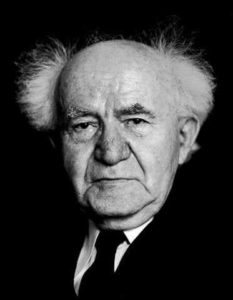While it is clear that the Jews were behind the Abrahamic religions, the origins of Buddhism, Hinduism, and Confucianism are not as obvious. I am about to demonstrate strong evidence that suggests that Jews were behind those religions as well. We have seen that the world’s big four religions, Christianity, Islam, Buddhism, and Hinduism, are similar in that they all promote the idea of weakness. We also do know that the Jewish controlled media promote ideas of weakness and pacifism. That alone should give one suspicion.
In order to understand the possible motives for the religions of Asia (referring to non-Levant Asia) we must look at the societies where these major religions came from. Buddhism, Jainism, and Hinduism emerged roughly 2200 to 2500 years ago in India. All three religions share many similarities such as the concept of dharma, the concept of karma, the importance of the attainment of nirvana, the belief in non-violence, the freedom to believe in a god or no-gods, and the lack of belief in an eternal heaven or hell or day of judgment.
When it comes to history there are things that have been omitted and even falsified. Often times historical records have been deliberately destroyed and therefore we have to piece together what we don’t know based on what we do know. Many historians that cover the history of ancient China and India choose to ignore evidence that suggests possible Jewish activities in those regions. Because of this it is up to us to compare known activities that occurred in those societies in the past with the ones that occur in modern times to determine if there is a match. We do know that major revolutionary changes were occurring throughout Eurasia at about the time that the major religions of Asia emerged. There were major upheavals in politics, culture, identity, and economics in Asia and the Mediterranean during this period. Nation-states were on the rise. Radical ideas were coming to the forefront. This was an era that was a prelude to modern capitalism. Economies were increasingly being driven by supply and demand, taxation, debt, and free trade. Life was becoming more urban and less rural. We also know that historically Jews have been traders and have made repeated contact with India and China for many many years. The Indians produced goods such as indigo and spices and China produced goods such as silk, perfume, and other goods that were in high demand by territories further west – especially the Roman Empire. In turn the Romans traded goods such as horses, firearms, wine, and gold to China and India. Many Jewish historians also noted that anti-Semitism among the Indians and Chinese were low as Jews were making inroads to their societies. This allowed Jews to prosper.
Hinduism
Hinduism, an Indian ethnic religion, emerged between 500 and 200 BC. It was a union of the elements of Buddhism, Brahmanism, Vedicism, and other Indian traditions. The caste system in India began to solidify around the time that Hinduism was becoming mainstream.
The Brahmans (not to be confused with Brahmins, which was the priestly class in India’s society) incorporated elements of Vedicism and Indian philosophy into their beliefs. The Brahman religion was a transition between the “barbaric” Vedic tradition and the more contemporary Buddhist one. There are some rumors that many of the early Brahmans were Jews. Richard Marks in Hindus and Hinduism in Medieval Jewish Literature makes some observations of the Brahmans and the Jews:
Or perhaps we could think of this “Judaization” of the Brahmans not merely as “turning the world into Jews,” a failure of information and imagination, but as an exercise in comparative religion. Seen in this way, the Hebrew translators and re-writers were expressing ideas about the values held in common by Jews and Brahmans. My brief and random survey of language and concept placed in the mouths of Brahmans revealed similarities in their views of monotheism and creation, in the values of learning and wisdom, of praising and trusting in God, of silent strength, and in the truth of human impermanence. Indeed, Jews and Brahmans differ, according to the stories, only in regard to the issue of revelation versus reason as sources of highest knowledge.
The Bene Israel sect was one of the largest Jewish communities in India in ancient times and was said to have arrived on the west Indian coast anywhere from the second century BC to the second century CE, depending on the account. Shalva Weil in On Origins, the Arts, and Transformed Identities: Foci of Research into the Bene, Israel writes:
H. S. Kehimkar’s book, The History of the Bene-Israel of India (1897/1937), is sometimes described by Bene Israel as their “sourcebook.” In this book, the author describes how the ancestors of the Bene Israel set sail from Palestine during the reign of King Nebuchadnezzer and became shipwrecked off the coast of India in the year 175 BCE. This account is repeated in different forms by other Bene Israel authors, such as Jacob B. Israel and M. Ezekiel, with embellishments by R. Reuben, who connects the shipwreck of the Bene Israel with the Chitpavan Brahmins, who have a similar story of origin. S. R. Samuel, writing in 1905, and S. Samuel, writing in 1963, accept the story of the shipwreck, but claim that the Bene Israel arrived in Sopara, derived from the Biblical town Ophir, in the eighth century BCE.
In contrast to the gentle Hinduism religion was the older Vedic religion, which originated from earlier tribal religions. Early Vedas text gave no references to reincarnation and the doctrines of karma. In Vedicism, ancestor worship was highly venerated and animal sacrifices, including the cow, were an important part of their rituals. The stark differences between the two religions marked a transition from a belief that was conservative to one that was more liberal. Hinduism, Buddhism, and Jainism reject much of the teachings of the Vedas.
The Silk Road
Around 100 BC the Silk Road was becoming a major trading network, connecting international trading communities with one another. The Silk Road connected China (more on China below), along with many tributaries, with the eastern Mediterranean territories. The Silk Road was a prominent trading route for 1500 years. Jews traded very prominently through the Silk Road.
(The) Jewish participation in the Silk Road during this time was both as merchants and as Silk producers. The Jewish participation in the Silk Road was not only in terms of business transactions. They had also served as banker and religious mediator. Jerry Brotton argues, “The banker therefore held money or deposit for merchants and in turn established sufficient credit”. Brotton stated that due perhaps to the growing trade in the Silk Road; there was a need for the establishment of credit system. The Jews were seen as the most qualified to handle credit transactions and act as “commercial mediators between the two religions (Christianity and Islam), for the simple reasons that the Jews were free of any religious prohibition against usury. It was therefore clear that the Jews had played an active role in the Silk Road either as merchants or as weaver, and also a banker. Karen Primack however, adds that the Jews also had other products traded at the Silk Road, such as cotton, perfume, and spices. They became the most dominant merchants and groups of people dwelling in the area during the period.
Those practicing Judaism and those practicing Buddhism were the two most noted people on the Silk Road.
Though many Jewish sources document Jewish activities in India, the other way around was not as true. Indian records are sketchy as to whether the people they traded with were actually Jews. That may be because Indians often did not distinguish among the different groups of outsiders and routinely lumped all of those originating from West Asia and southeastern Europe as Yavanas. Mlecchas or impure outsiders was also a term the Indian could have used and the Jews may have been designated as such.
Buddhism
The religion of Buddhism teaches that man’s life is full of suffering whether it be from disease, old age, injury, or death. In order to stop that suffering, man needs to obtain Nirvana. In the state of Nirvana the self does not exist, nor does the continual cycle of death and rebirth otherwise known as reincarnation (Hindus and Jains also believe in reincarnation). Buddhists have different views on how to attain Nirvana depending on the school. The Theravada school puts emphasis on liberating the self from suffering while the Mahayana stresses helping others to be liberated from it. Buddhism, like Christianity, is a universalist religion and prioritizes the individual rather than the group.
During the heydays of the Roman Empire there was large demand for luxury goods from the East. Goods however were not the only things exchanged along the Silk Road and the maritime routes. Ideas and beliefs also blossomed. In particular, trade facilitated the spread of Buddhism, which was derived in large part from Jainism. The Silk Road enabled the first large scale missionary movement in global history. In fact Buddhism’s peaceful teachings may have been designed specifically to facilitate trade and to discourage violence towards the traders and the caravans that traversed the routes.
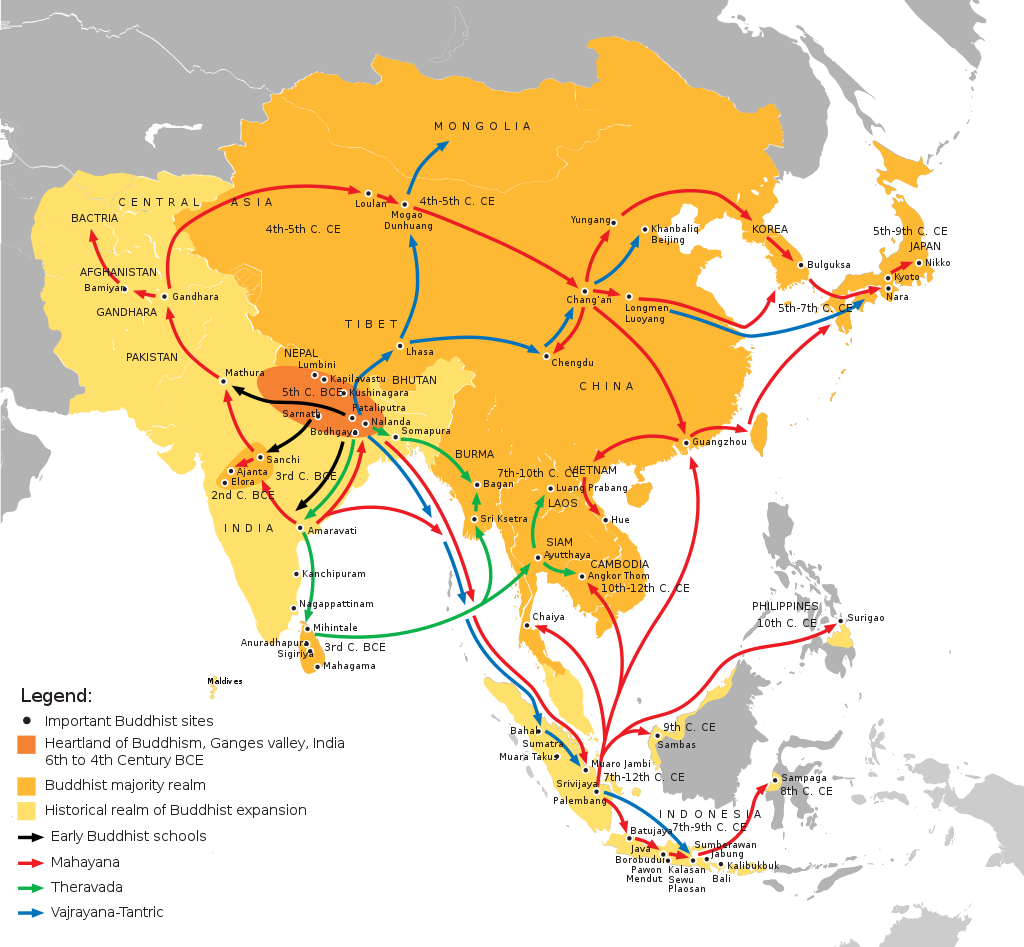
Buddhism spread all over central and eastern Asia along the major trade routes
Jason Neelis on Buddhism and Trade:
Wealthy merchants and powerful rulers were particularly encouraged to be very generous in return for practical benefits, such as refuge and protection from real and perceived dangers while traveling, and status or legitimacy by acting as patrons of religious institutions. Epigraphic records of donations to Buddhist stupas and monasteries in India attest to the importance of commercial and political patronage of Buddhist institutions.
Ranabir Chakravarti, in Reaching out to Distant Shores: Indo-Judaic Trade Contacts, writes that both Buddhism and Jainism were adapted for trade:
Buddhism strongly upholds commerce (vanijja), along with agriculture (kasi) and cattle-keeping (go-rakkha) as excellent professions fit to be followed by people of excellent pedigree. Contrary to orthodox brahmanical notions against sea-voyages, the Buddha himself is portrayed as a master mariner (Supparaga).
…
There is little doubt that both Buddhism and Jainism received continuous and substantial patronage from the trading communities. The normative texts, however, generally encourage the activities of foreign merchants in India. Even the Arthasastra, famous for its draconian measures against unscrupulous traders, warmly welcomes the arrival of nonindigenous merchants. There is thus no uniform or standardized attitude to trade and traders in early India.
Hmm, are we seeing something here? Who were those foreign merchants?
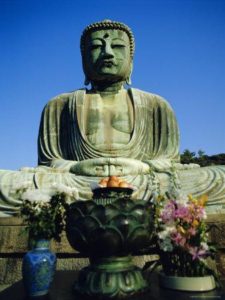
When one thinks of Buddha they picture a great leader who was humble, plain, and one who gave away his wealth. Nothing can be further from the truth. Buddha, also known as Siddhartha Gautama, may have been plain on the outside but was a man who heavily pursued the idea of amassing great wealth through capitalism. He was born into an aristocratic family of the Shakya clan.
Buddha on wealth:
Whoso is virtuous and intelligent,
Shines like fire that blazes.
To him amassing wealth, like a roving bee
Its honey gathering,
Riches mount up as an ant-heap growing high.
When the good layman wealth has so amassed
Able is he to benefit his clan.
In portions four let him divide that wealth.
So binds he to himself life’s friendly things.
One portion let him spend and taste the fruit.
His business to conduct let him take two.
And portion four let him reserve and hoard;
So there’ll be wherewithal in times of need.
Yes, that was written by Buddha. It actually sounds like stuff right out of the Hebrew Bible. For example in Ezekiel 28:5:
5 By your great skill in trading
you have increased your wealth,
and because of your wealth
your heart has grown proud.
No doubt that countless early traders heeded the message of Buddha … and the Hebrew Bible. Perhaps those traders were of Hebrew background?
An interesting note by Xinru Liu in The Silk Road in World History:
Buddha and his disciples could not till the land, because tilling killed insects and the act of killing would cause more suffering in one’s future lives. Someone else had to do the dirty work to feed them. As the Buddha’s disciples increased in number, they organized themselves into a sangha, literally “gathering” or “congregation.” Once the number in a sangha reached a few hundred monks, only the great cities could afford to receive the Buddha and his disciples, and only prosperous traders could afford to feed them. Meanwhile, the patronage of Buddhist sanghas brought prestige to the urban residents in an agriculture-based society. The Buddha himself advised merchants to accumulate wealth by making investments and working diligently like bees so that the Buddhist sangha could gain sufficient financial support from lay believers. The creation of wealth was not only beneficial to society but also brought religious merit to the donor. This mutual dependence produced a natural alliance between the commercial communities and the Buddhist sangha.
Hmm … what other group of people prohibited themselves from tilling the land and getting their hands dirty? One may wonder whether Buddha himself was a Jew. The not tilling of the land because of the fear of killing insects sounds more like an excuse not to perform manual labor.
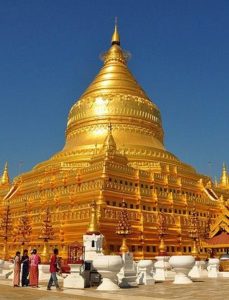
Like the Jewish created religion of Christianity, which came afterwards, Buddhism relied heavily on wealthy donors to keep the religion going. Buddhism was more akin to a program of powerful capitalistic enterprises than some humble beginnings.
With tremendous wealth in their hands, Buddhist monasteries became large economic enterprises, engaging in all kinds of business, including trading, investing, and the making of alcohol. The most important activity became building, maintaining, and expanding monasteries in order to promote Buddhism. – Xinru Liu
Before Buddhism, international trade was considered taboo (Indians were not alone in this mentality).
Coupled with the pronounced negative assessments and attitudes about trade and traders in the Brahmanical treatises, is the strong sastric tradition that crossing the sea made one ritually impure. Manu therefore forbids a brahmana, who undertook a sea voyage, from an invitation to the sraddha ceremony. Later Puranic texts with a more hardened attitude brand sea voyages as a forbidden act in the Kali age (kalivarjya), the worst of the four traditional yugas or time cycles in Indian tradition. – Ranabir Chakravarti
Brian Weinstein on The Jews after the Roman destruction of Judea during the 2nd century CE:
The strong will to survive as a community despite the dispersion motivated travelers, traders, and rabbis. Sometimes rabbis, traders, and travelers were one and the same. They exchanged commercial information as well as questions and answers about Jewish law and Jewish liturgy.
Remember Jews have been prolific traders throughout history. They are a nomadic people who have never established ties to the land they reside. Because Jews have never learned the land and have never learned how to cultivate it, they have funneled their energy into activities that take existing works from others and deriving profits from it by repackaging, redistributing, and reselling it. They have survived by living off the backs of others and have never really produced anything. Whenever you hear of “wealthy Indian”, “wealthy Arab”, or “wealthy Chinese” traders there is a high probability that they are actually Jews in disguise. Jews are the world’s foremost capitalists. They are an international people who show more loyalty to fellow Jews than to their host countries. One thing they deserve credit for is that they know how to satisfy demand like nobody else. If you want something, they know how to get it for you.
Ashoka the “Great”
There is a distinct possibility that the Hebrew term Y’vana was derived from Sanskrit Yavana. Logically assuming that Hebrew speakers derived their understanding of Y’vana from Indian sources, the term Yavana could signify, among other ethnic groups, the Jews of West Asia as known to Indians of the time of Asoka (Ashoka). – Ranabir Chakravarti
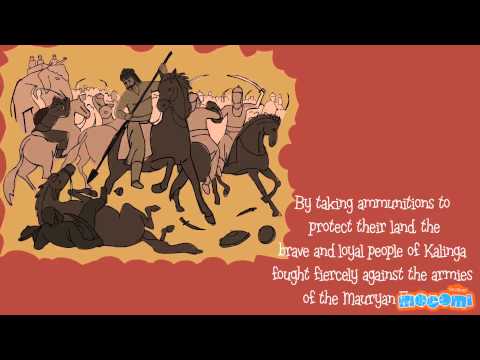
Ashoka has been known as one of the great early disciples of Buddha. Under him Buddhism flourished. Ashoka was a powerful and ruthless Indian emperor of the Maurya dynasty who invaded the Kalinga Empire and butchered 100,000 of their people, often with horrific brutality. This was known as the first widespread religious persecution in Indian history. Ashoka the Great was also known as Ashoka the Cruel. Ashoka reigned from 268 to 232 BC.
Jainism
Jainism shares many similarities to Buddhism and has been a great facilitator of trade as alluded to above. It was the perfect religion for the emerging market economies of the Axial Age.
Jainism practices non-injury or Ahimsa to the point of absurdity. Jainas would not drink water without straining it for the fear of killing insects and covered their mouth with muslin to save any floating life in the air. Jainism prohibited war and even agriculture as both involved killing of living beings. Eventually the Jainas confined themselves to trade and commerce. Acts of violence and killing, whether intentional or not were to be particularly avoided. The Jain monks usually carried feather dusters to brush ants and insects being trampled on the path.
Jainism, also known for it’s doctrines of nonviolence, hailed trade as the least violent of all occupations. Chakravarti writes “Jainism is still popular among the Indian mercantile communities. Therefore, it is of little surprise that Jaina writers composed biographies of great merchants who were also major patrons of Jainism.”
Ranabir Chakravarti
According to Eric Garlach, early adherents of Indian religions such as the Jains were characterized as shrewd businessmen, usurers, and hoarders of wealth. Jains and Jews behaved so similarly that they were often lumped together as one and the same. It may not be a stretch to say that they were actually the same people. Considering that the native people of India were largely sedentary people who practiced agriculture and pastoralism, Garlach’s description of the early Jains doesn’t describe Indian behavior at all.
Indian Jews
Many Jews settled on the western seaboard of India and developed trading communities. Some intermarried with the locals.
According to Nathan Katz the first Jewish diaspora in India was 72 CE in Kerala, just two years after the Roman destruction of the Second Temple in Jerusalem.

Jew from Kerala
Remember Wherever Jews have settled, they have tried their best to blend in with the natives. Whenever Jews have tried to gain wealth and power after settling the land, they have attempted to pacify the people. Societies before Jewish influence were highly tribalistic, typically barbaric, and frequently violent.
Jews and Buddhism Today
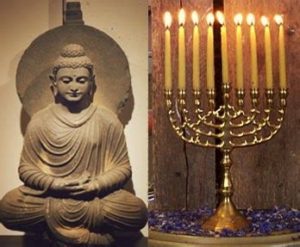
Jews embrace Buddhism.
In his sociological survey of seven Buddhist centers in North America, sociologist James Coleman found that 16.5 percent of the Buddhist practitioners in his randomly generated sample were of Jewish backgrounds. Similarly, sociologist Wendy Cadge discovered that nearly a third of those she interviewed at the Cambridge Insight Meditation Center as part of her comparative ethnographic study of Theravada Buddhist organizations in the United States were of Jewish background. Through his research for his best-selling book The Jew in the Lotus, Rodger Kamenetz estimated that Jews represented about 30 percent of Western Buddhist groups in the United States. While scholars do not have precise statistics about the number of Jews involved in Buddhist communities in the United States, it seems safe to assert that the proportion of Jews in Buddhist circles is disproportionate to the percentage of Jews in this country. – Emily Sigalow
In the book, Jew in the Lotus: A Poet’s Rediscovery of Jewish Identity in Buddhist India, Rodger Kamenetz reasons why so many Jews are attracted to Buddhism. A lot has to do with what Jews perceive is a shared history between the persecutions of the Jews and the persecution of the Buddhists, particularly with regards to the Tibetans during the Chinese Communist Revolution. Excerpts from Jews in the Lotus:
Actually, we Jews have a rich menu of crises to choose from. The expulsion from Spain in 1492, the Inquisition, and the Crusades were all terrible disasters. And the Babylonian captivity provides fascinating parallels to Tibetan history. But all of us were thinking most about the Holocaust. Seeing photographs of the Chinese destruction of Tibetan Buddhist monasteries, temples, and libraries, I recalled the systematic Nazi destruction of synagogues. When I read about celibate Tibetan nuns and monks being humiliated and tortured, I remember the SS forcing rabbis to spit on the Torah before shooting them. And the death of more than a million Tibetans as a result of the occupation brought up the inevitable charge of genocide. As Rabbi Lawrence Kushner had told the Dalai Lama when they met in New Jersey, “The Chinese came to your people as the Germans came to mine.” (p92)
And there were remarkable similarities in the theology of exile. Nathan Katz told me once about a time he was staying in the Drepung monastery in southern India. “It’s out of the way and they don’t have so many foreigners as in Dharamsala. A monk said to me spontaneously—he didn’t know I was Jewish—‘We have the same idea as the Jews had. They had all this exile, but they know God was leading them into exile, and we know that because of this exile the whole world is learning dharma from us. If it weren’t for what the Chinese did to us, we wouldn’t be spreading dharma, which is more important than our suffering.’” (p124)
In Jew in the Lotus, “Holocaust” is mentioned forty-six times while “Israel” is mentioned seventy-one times and “anti-Semitism” is mentioned eight times.
Allen Ginsburg was a Buddhist.
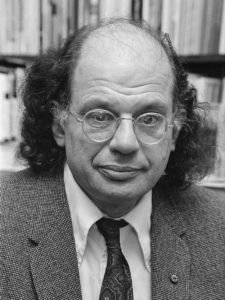
David Ben-Gurion, Zionist founder of Israel, studied Buddhism seriously upon his visit to Burma in 1961.
